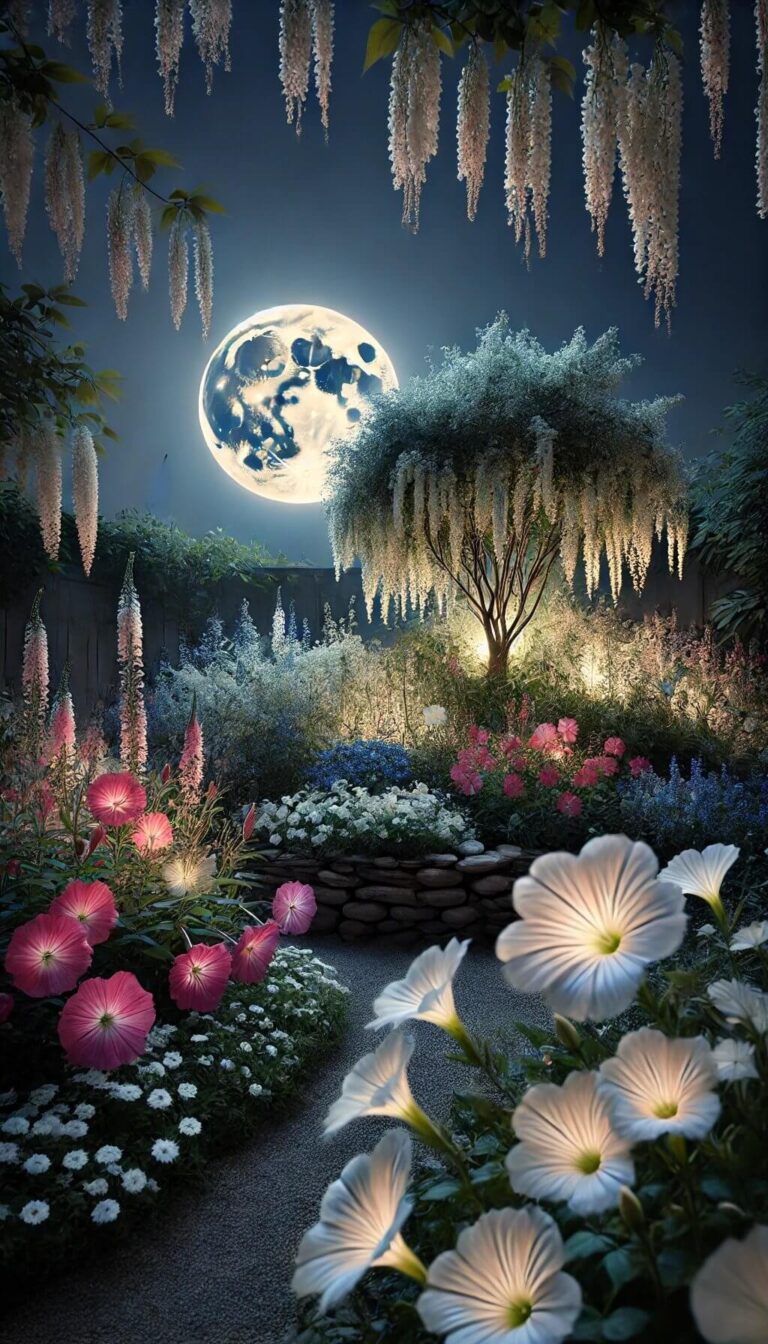46+ Different Types Of Purple Flowers With Names And Pictures
Purple flowers have a unique allure that captivates the senses, and they can be found in a wide range of plants, from famous trees and bushes to vines, herbs, and even weeds. This article will delve into some of the most popular purple flowers, as well as some lesser-known varieties. Whether you’re looking to adorn your garden or simply appreciate the symbolism behind these lovely blooms, this post is for you.
From towering trees with vibrant purple flowers to delicate herbs that add a pop of color to any arrangement, there’s something for everyone when it comes to purple flora. We’ll explore the significance and meaning behind these stunning flowers, as well as some surprising examples from nature. So, let’s dive in!
Purple flowers meaning and symbolism
In the realm of symbolism, purple flowers hold a profound significance that transcends cultural and historical boundaries. This majestic hue has long been linked to power, royalty, and spirituality, making it a ceremonial flower par excellence. In medieval times, purple flowers adorned royal emblems and coats of arms, serving as a status symbol for monarchs and the elite. In ancient civilizations like Greece and Egypt, purple flowers held sacred importance.
They were burned in temples, extracted for oil, and dried for tea, believed to channel the power of deities. This long-standing association with divinity has solidified purple flowers’ status as symbols of reverence across cultures and faiths. Today, purple flowers convey a range of meanings, including dignity, pride, wisdom, and empowerment. They also represent accomplishment, success, deep admiration for something or someone, and a sense of profound respect.
The presence of purple flowers in an arrangement or garden imbues it with innate power and elegance.
Trees with purple flowers
As the fleeting beauty of cherry blossoms in Korea and Japan reminds us, certain trees can effortlessly transport an unremarkable space into a whimsical wonderland. Among these, a select few boast stunning purple blooms that demand attention. If you’re looking to bring this magic to your yard or stumble upon it in a park, here’s a primer on some of the most remarkable trees with purple flowers.
#1. Jacaranda mimosifolia (Blue Jacaranda)
A semi-evergreen tree with striking purple flowers that bloom in the spring, this species thrives in full sun and sandy soils. During their early years, they are pruned to establish a strong shape and structure, but once mature, pruning ceases altogether. Native to South America, it’s an ideal choice for parks and yards, boasting symbolic meanings of wealth, health, and good luck.
#2. Crape Myrtle
Beneath its deciduous evergreen exterior, this species of myrtle boasts a unique profile within the line of fifty others that share its characteristics. The summer blooms, a deep purple hue, are particularly striking when paired with the reddish-brown bark that will eventually transform into a silver-gray sheen in the winter months.
This versatile tree can be coaxed into its full height or pruned to maintain a shrub-like appearance, making it an ideal choice for those seeking to create a whimsical garden atmosphere. In addition to its visual appeal, this species has symbolic significance as an emblem of marriage and a sacred tree of Aphrodite, representing themes of love, fortune, and longevity.
#3. Vitex (Vitex agnus-castus)
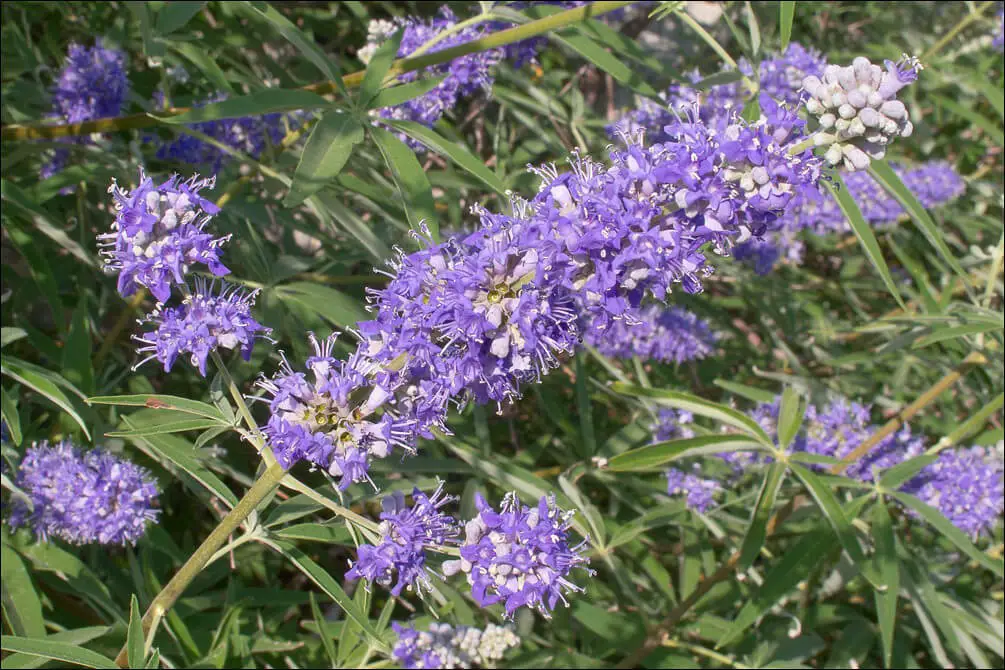
Native to India and Asia, the plant is also known as the chase plant, Abraham’s balm, or Indian spice. Its versatility allows it to be propagated into stunning shrubs or nurtured into a majestic tree. As a deciduous evergreen, it produces small, clustered lilac-like flowers throughout the summer months. During late spring and winter, its leaves will gradually fall off, revealing its beautiful, seasonal changes.
#4. Purple Orchid tree (Bauhinia variegata)
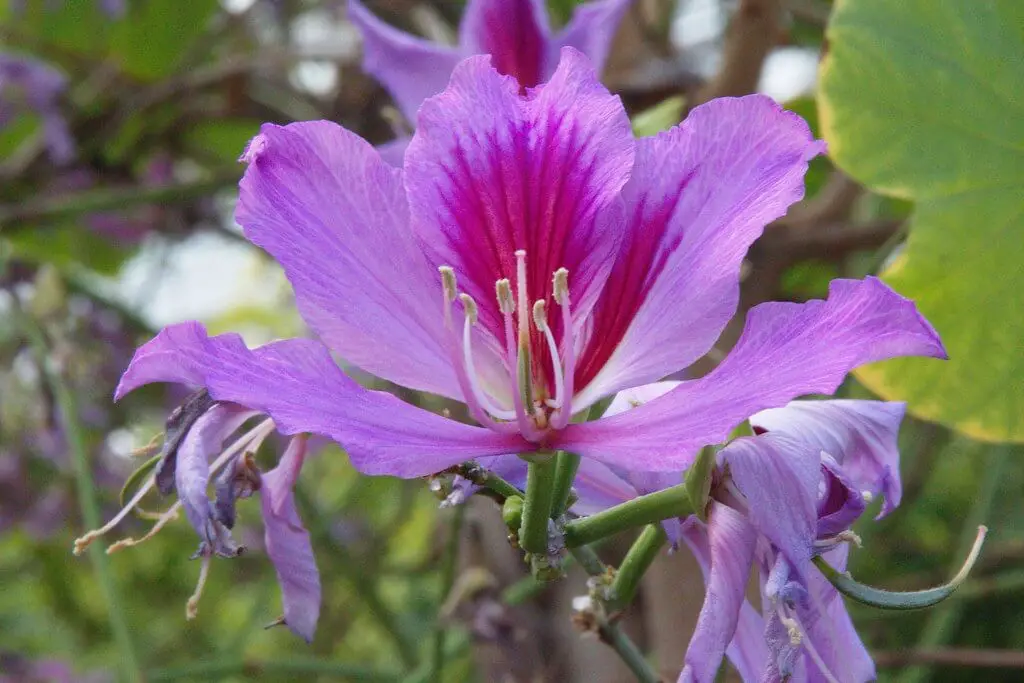
The Butterfly Tree, also known as the Clump Orchid, is a popular choice in modern landscaping due to its unique characteristics. Its small, clustered flowers display a striking contrast of lavender, white, and deep purple hues, complemented by heart-shaped leaves. This versatile plant can be pruned to maintain a bushy shape or allowed to grow into a full-fledged tree, with branches that can stretch far enough to provide shade for a side yard.
Native to tropical and subtropical climates, it is often planted alongside other flowering vines like honeysuckle, hibiscus, and bougainvillea.
#5. Texas Mountain Laurel (Sophora secundiflora)
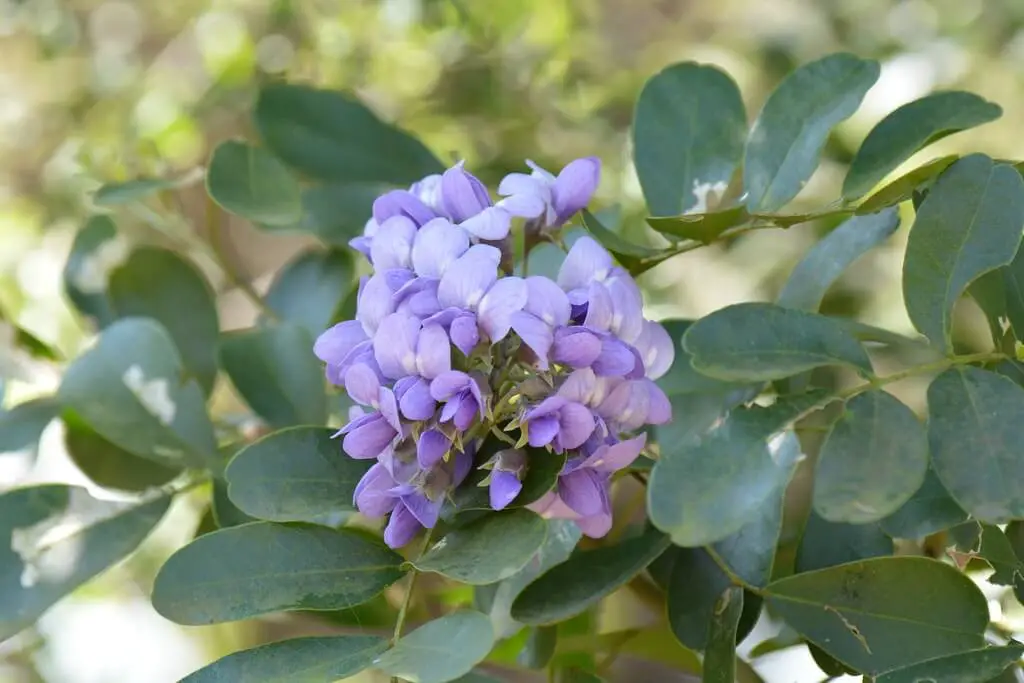
The mescal bean, a shrub known for its unique characteristics, is often overlooked due to its relatively short stature. Reaching only a few feet in height, it’s commonly classified as a multi-trunked shrub. Its ornamental value lies in the striking contrast between its dark green leaves and vibrant purple flowers that bloom throughout the spring season. The fragrant clusters of these flowers are not only visually stunning but also release a sweet aroma into the air.
Interestingly, the seeds of this plant hold significant cultural importance for native Americans, who use them as ceremonial ingredients. Furthermore, all parts of the mescal bean tree – its bark, flowers, and seeds – possess hallucinogenic properties.
#6. Purple Robe Locust (Robinia “Purple Robe”)

The Robinia tree, also known as the Acacia, is a deciduous species that boasts stunning displays of lavender to deep purple flowers during the spring season. What’s more, this majestic tree remains a striking presence throughout the winter months, its beauty only enhanced by the changing seasons.
Ideal for sprawling yards and parks, the Robinia tree emits a sweet, fragrant aroma in the spring that is sure to delight.
Its metallic red leaves are also a sight to behold, adding a pop of color to the landscape. But the Robinia’s uses don’t stop there – it can also be cultivated as a garden shrub or ornamental thorny plant, offering homeowners and landscapers alike a wealth of creative possibilities.
#7. Purple Leaf Plum (Prunus cerasifera ‘Krauter Vesuvius’)
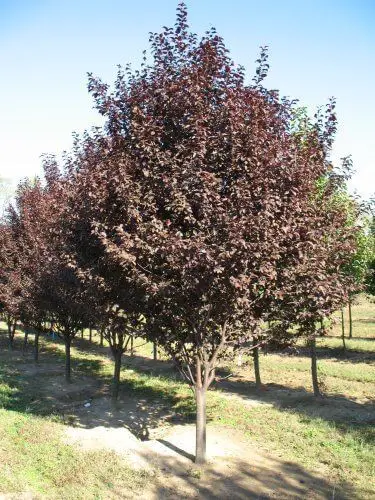
The cherry plum, affectionately dubbed as such, boasts stunning purple-pink flowers that burst forth in the spring and succulent fruits that ripen throughout the summer and fall. This beloved ornamental tree is a magnet for hummingbirds, capable of reaching impressive heights of up to 20 feet.
In landscaping terms, its cascading blooms trailing from long branches create a breathtaking visual display that is truly hard to ignore.
Native to Asia and the Caucasus region, this versatile tree has come to symbolize the beauty of transition and fruitfulness, making it an attractive addition to any outdoor space.
Weeds with purple flowers
It may come as a surprise that certain types of weeds can produce stunning purple flowers. While these flowering weeds are undoubtedly visually appealing, their reputation precedes them. Their invasive roots can outcompete other plants, stifling their growth and preventing them from reaching their full potential. However, some species, such as the ones in question, have been cultivated as ornamental plants.
#8. Henbit (Lamium amplexicaule)
The henbit plant, part of the mint family alongside ornamental Lamium, is a ubiquitous presence in various landscapes. Its native habitat spans Europe and Asia, where it’s often used in salads, with its leaves and flowers consumed raw. Interestingly, this weedy species thrives not only in traditional agricultural settings like pasture lands but also along roadsides. The tubular purple blooms of the henbit plant typically flourish from summer to fall.
#9. Purple deadnettle (Lamium purpureum)
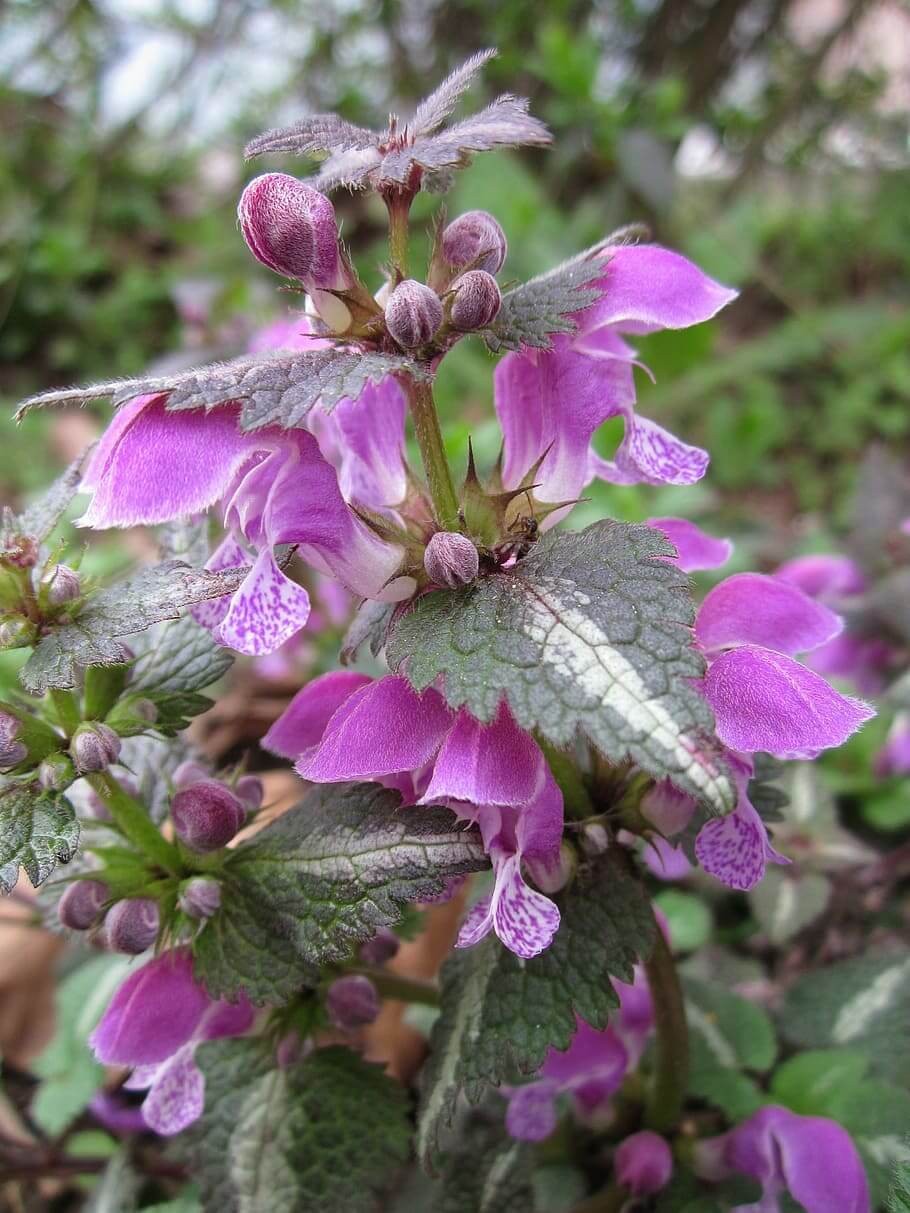
The botanical name of this plant translates to ‘the devouring purple monster’ when rendered into English, which aptly captures its impact on surrounding fields. If left unchecked, it can quickly turn pasture lands and fields into a vast expanse of purple weeds. Despite its reputation as an invasive species, the tubular purple flowers that bloom throughout the summer do have their charm, particularly for bees who find them irresistible.
Interestingly, the plant also has several medicinal applications, including use as a diuretic and a treatment for minor wounds and cuts.
Bushes or shrubs with purple flowers
Incorporating shrubs and bushes with purple blooms into your landscaping or gardening projects can be a fantastic way to add visual interest and functionality. These flowering plants can serve as effective garden dividers, inject a burst of color into an otherwise ordinary yard, or even help deter unwanted insects, bugs, and critters from entering your outdoor space. If you’re seeking the perfect bush with purple flowers for these purposes, it’s best to begin by exploring the following options.
#10. Azalea
The azalea is often referred to as the Royal of the Garden due to its unique characteristic of featuring more than four distinct color ranges, including vibrant hues like blue, orange, and purple. Each variant boasts a distinctive petal shape and varying numbers of blossoms per stalk, further adding to its regal appeal.
While other members of the rhododendron family share some similarities with azalea, this particular species stands out for its smaller, more pointed blooms compared to its larger, leathery leaves. In many cultures, the azalea is also imbued with symbolic meaning, signifying nostalgia and a deep-seated longing for one’s childhood home.
#11. Rhododendron
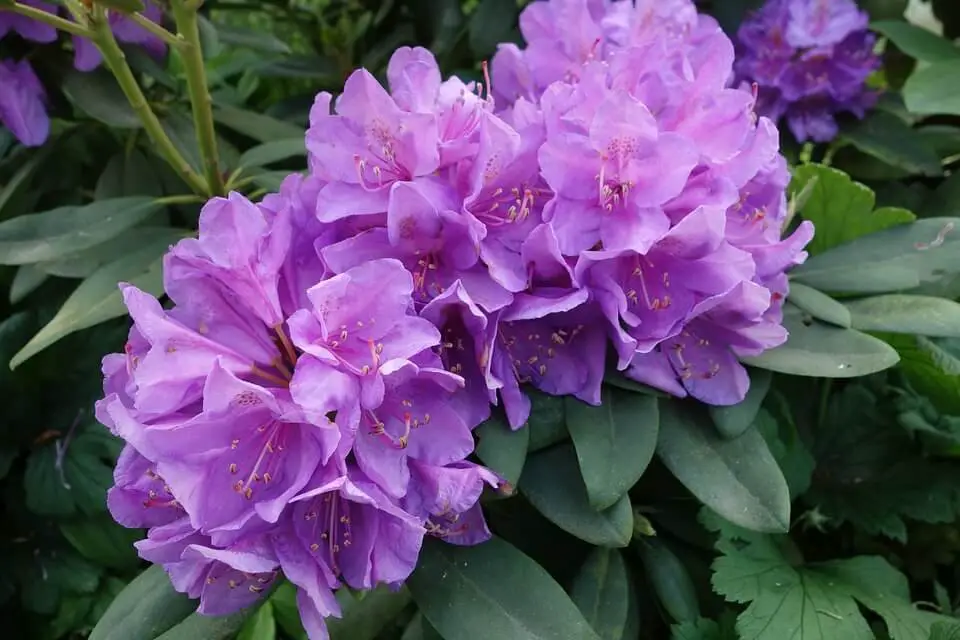
The majestic rhododendron boasts a unique characteristic – its showy, bell-shaped purple blooms that fill the air with an unmistakable floral scent during spring’s gentle warmth and into the early winter months. When in full bloom, these stunning flowers cluster densely together, creating a breathtaking spectacle that is often referred to as ‘a sight to behold’.
Interestingly, rhododendrons have also been revered for their symbolic significance – they are often gifted to loved ones as a token of protection against evil spirits and ill health, believed to ward off negative energies and bring positivity into one’s life.
#12. Butterfly bush
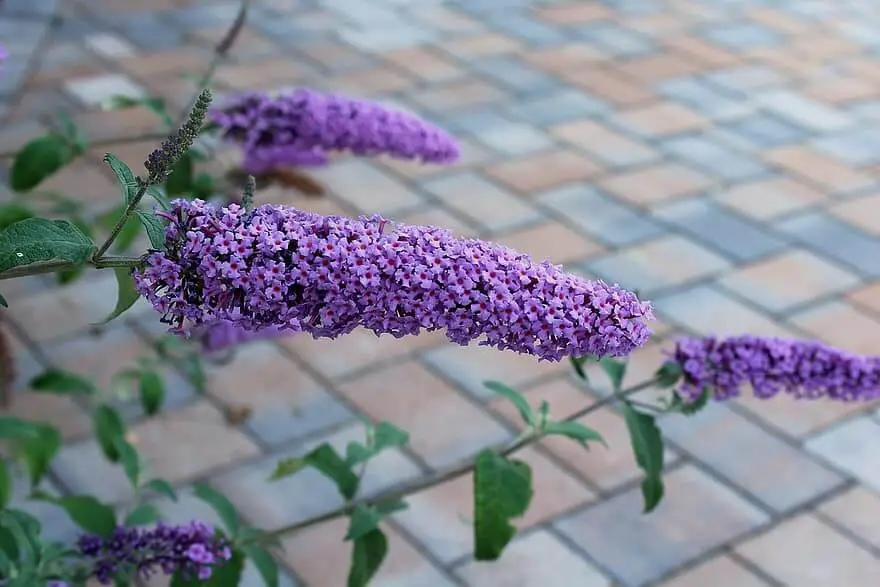
The Butterfly Bush’s moniker is straightforward: its very essence is reflected in its name. This shrub’s distinguishing feature is the profusion of tiny, regal purple blooms that cluster along a lengthy stem. When it comes to optimal growing conditions, the Butterfly Bush requires full sun and well-drained soil. Interestingly, with proper care, this bush has the potential to mature into a small tree. Dubbed the Summer Lilac, this plant is often symbolic of rebirth and new beginnings.
#13. Wisteria
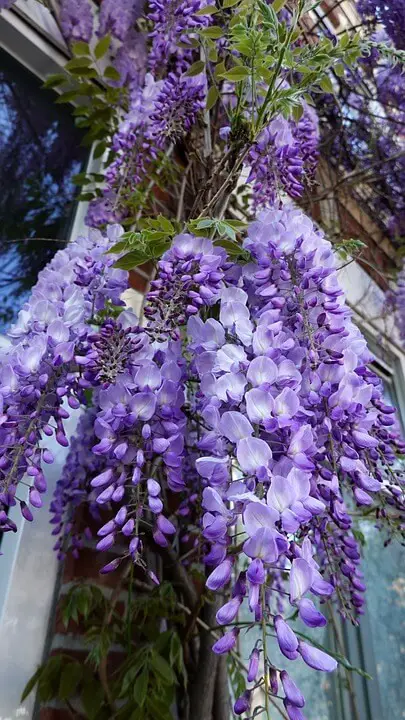
Wisteria flowers present a unique growing habit, as they thrive in vines but can be trained to grow as bush plants due to their cluster blooming nature. A member of the pea family, Wisteria is native to Asia, where it has been cultivated for centuries. The plant’s lavender blooms are highly prized for adding a touch of elegance to arbors, trellises, and hanging gardens alike.
In addition to its aesthetic appeal, Wisteria holds symbolic significance, often representing beauty, love, and fertility in various cultural traditions.
#14. Rose Bushes
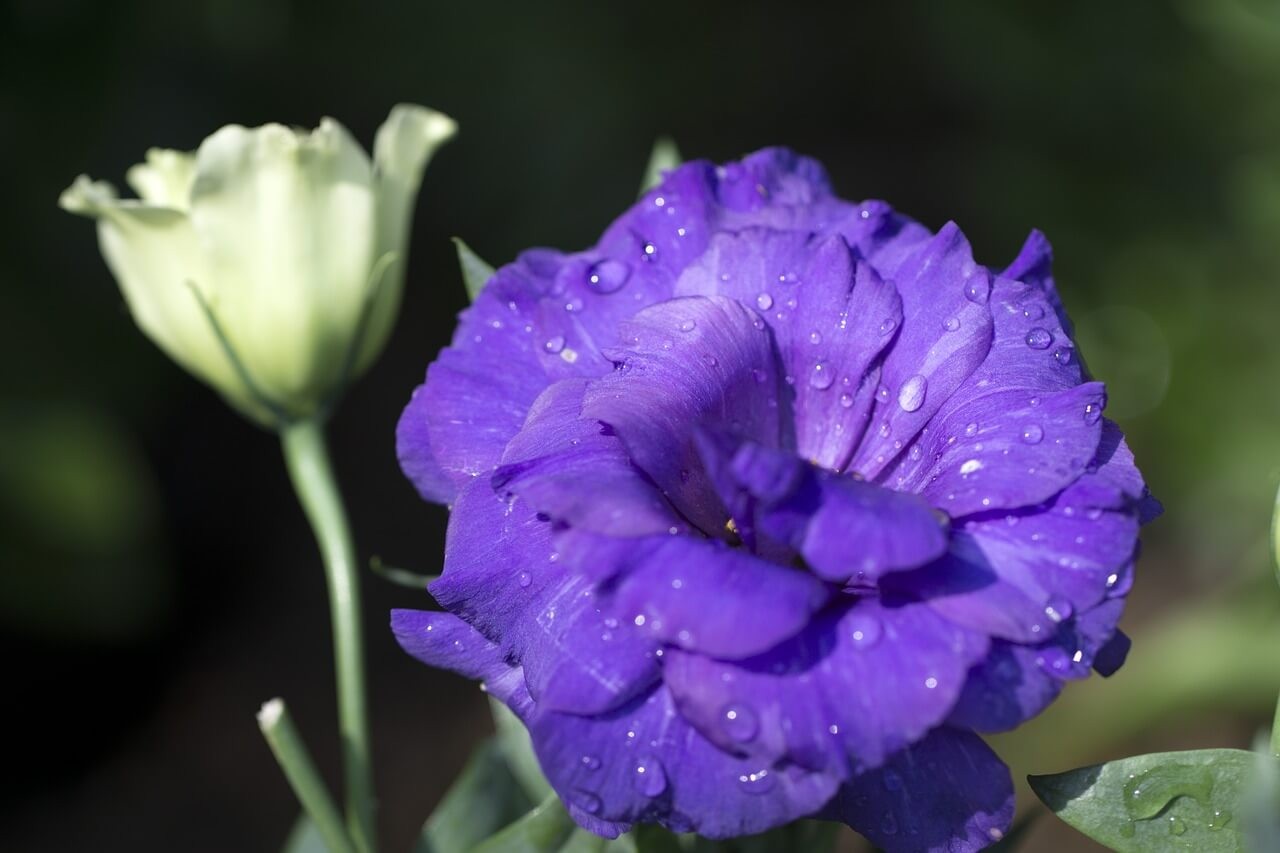
Roses with long stems that produce only one flower per stem are an extraordinary find, as each bloom requires precise conditions to flourish. This uniqueness makes them highly sought after for floral arrangements, often sourced from dedicated rose bushes. What’s more, the rare colors of midnight blue and lavender/purple add an air of sophistication to any bouquet.
Over time, these long-stemmed roses have become a beloved choice for romantic celebrations, symbolizing enchantment, unwavering devotion, and regal grandeur – making them an ideal 25th anniversary gift.
#15. Hydrangea
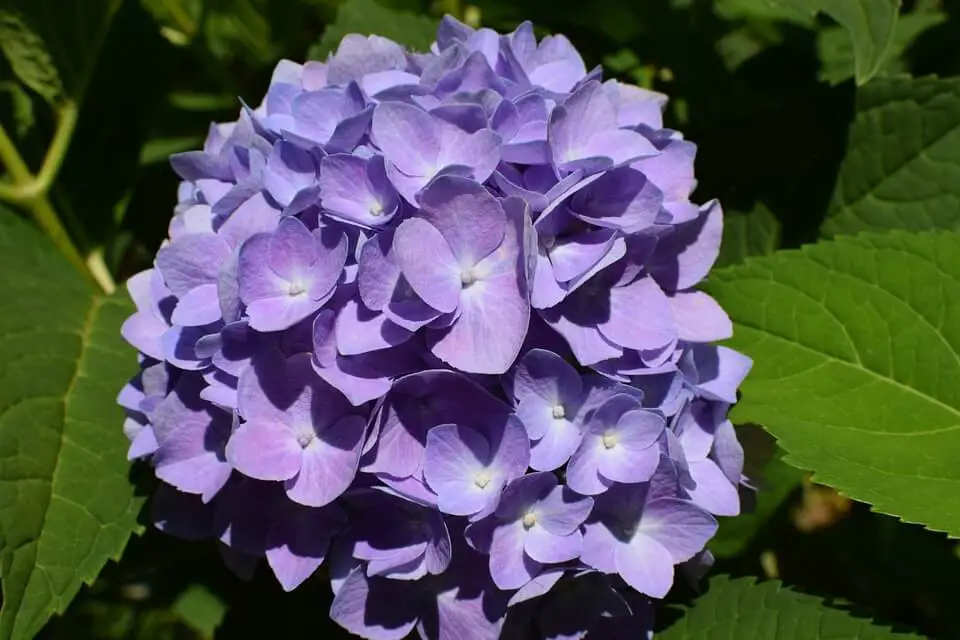
The majestic beauty of this clumped flower has captivated florists and wedding planners alike with its stunning display of deep blue, purple, and pink shades. Its striking trumpet-shaped petals, perfectly aligned to create a symmetrical effect, are a sight to behold. As a low-growing shrub, it blooms from summer to fall, making it a popular choice for weddings and other special occasions.
The symbolism surrounding this flower is just as impressive, representing strong emotions, loyalty, and devotion – qualities that make it a timeless favorite among those planning the perfect ceremony.
#16. Lilacs

Lilacs are frequently utilized as border plants in gardens, adding a touch of elegance to outdoor spaces. Their delicate flowers also make them a popular choice for decorative arrangements, where their soothing, subtle fragrance can be fully appreciated.
Beyond their aesthetic appeal, lilac flowers have several practical uses. They’re often dried and used in potpourri blends or turned into essential oils, which are valued for their calming properties.
Additionally, the fragrant blooms are sometimes incorporated into hypoallergenic powders to provide a gentle, soothing sensation.
In a symbolic sense, lilacs have taken on significant meaning around the world. In many cultures, they’re seen as a symbol of resurrection or rebirth, which is why they’re often associated with Easter and other springtime celebrations.
#17. Caryopteris
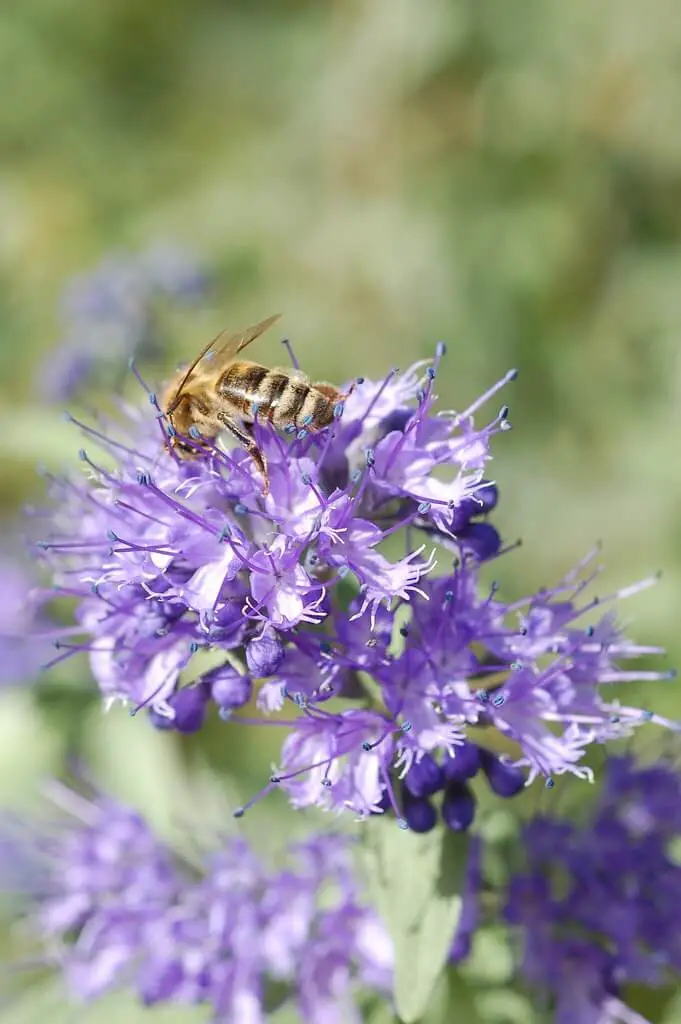
Bluebeard or Blue Mist, a highly prized ornamental plant, stands out due to its remarkable ability to retain its blue-indigo blooms for an extended period. This unique characteristic makes it an ideal choice for garden borders, particularly during the fall season when its vibrant color adds a pop of beauty. The intoxicating aroma emitted by these flowers is also a magnet for birds and bees, drawing them in with its sweet and inviting scent.
As a symbol of anticipation, Bluebeard or Blue Mist serves as a reminder that even the most ordinary moments can hold surprises and excitement.
#18. Golden dewdrops
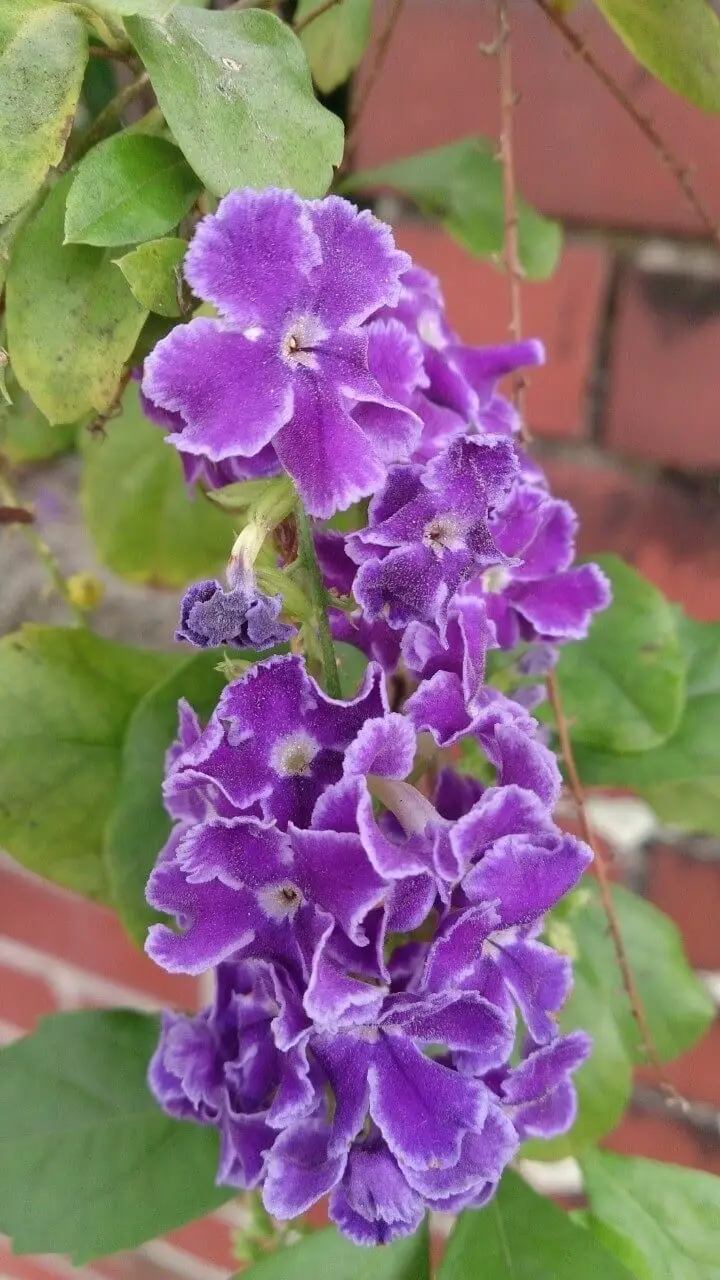
In certain regions of Asia and the Pacific, this particular shrub has gained notoriety as an invasive species. Its toxic properties make it hazardous to both humans and animals. As a result, those who cultivate it must carefully remove its fruit as soon as they appear to prevent any potential harm. Despite these challenges, the shrub has been recognized for its medicinal value in treating a range of ailments including asthma, cataracts, malaria, influenza, and infections.
In some cultures, this plant is also referred to as ‘golden tears’.
#19. Heather
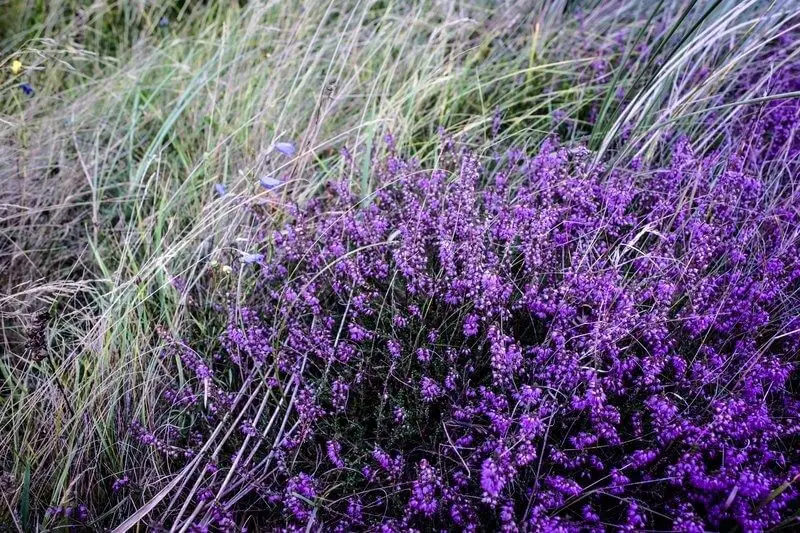
Heather flowers, also known as heaths, have a special significance in Scottish and English culture. In fact, Queen Victoria’s influence helped popularize the idea that these blooms signify good luck and fortune. A distinctive feature of heathers is their upright stalks, which are adorned with tiny clusters of vibrant purple and raspberry-colored flowers from summer to fall. As a result, they’re often used as border flowers in gardens.
But what’s perhaps more intriguing is the symbolic meaning behind these lovely flora. Heathers are said to represent loyalty, appreciation, and confidence – making them a thoughtful addition to any bouquet or arrangement.
#20. Bougainvillea
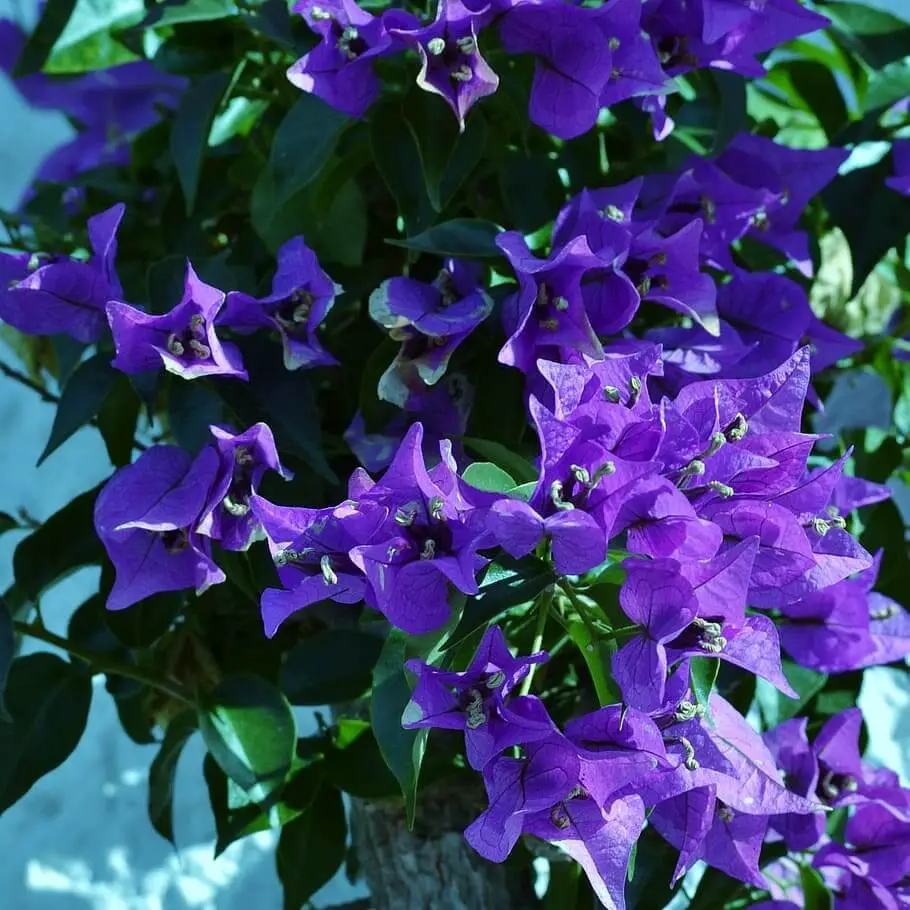
While many may not be aware, bougainvillea is often affectionately referred to as ‘four o’clocks.’ Its popularity stems from its relatively low maintenance and ability to thrive in a variety of conditions, resulting in over 200 distinct species. This versatile plant can be trained to grow as a thorny vine, bush, or even tree, depending on the desired cultivation method.
As it blooms with vibrant flowers throughout the summer and fall seasons, bougainvillea also holds symbolic significance, representing peace and harmony.
Vine with purple flowers
The beauty of lavender lies not only in its enchanting fragrance but also in its stunning visual appeal. These elegant flowers will undoubtedly steal the show when incorporated into arbors, fences, and trellises. With their vibrant purple hue, it’s no wonder they’re a popular choice for many garden enthusiasts. Among the various varieties, three stand out as particularly common and impressive:
#21. Clematis
The Clematis gets its name from the Greek word ‘klematis,’ which translates to ‘vine.’ This flowering vine is renowned for its striking purple, blue, and white hues, making it an excellent choice for ground cover or training up fences and trellises. Notably, the Clematis is cultivated solely for its ornamental value, as it is toxic to animals.
Furthermore, this flower holds significant symbolic meaning: it serves as the eight-year anniversary bloom, as well as a representation of intelligence and brilliance.
#22. Morning glory
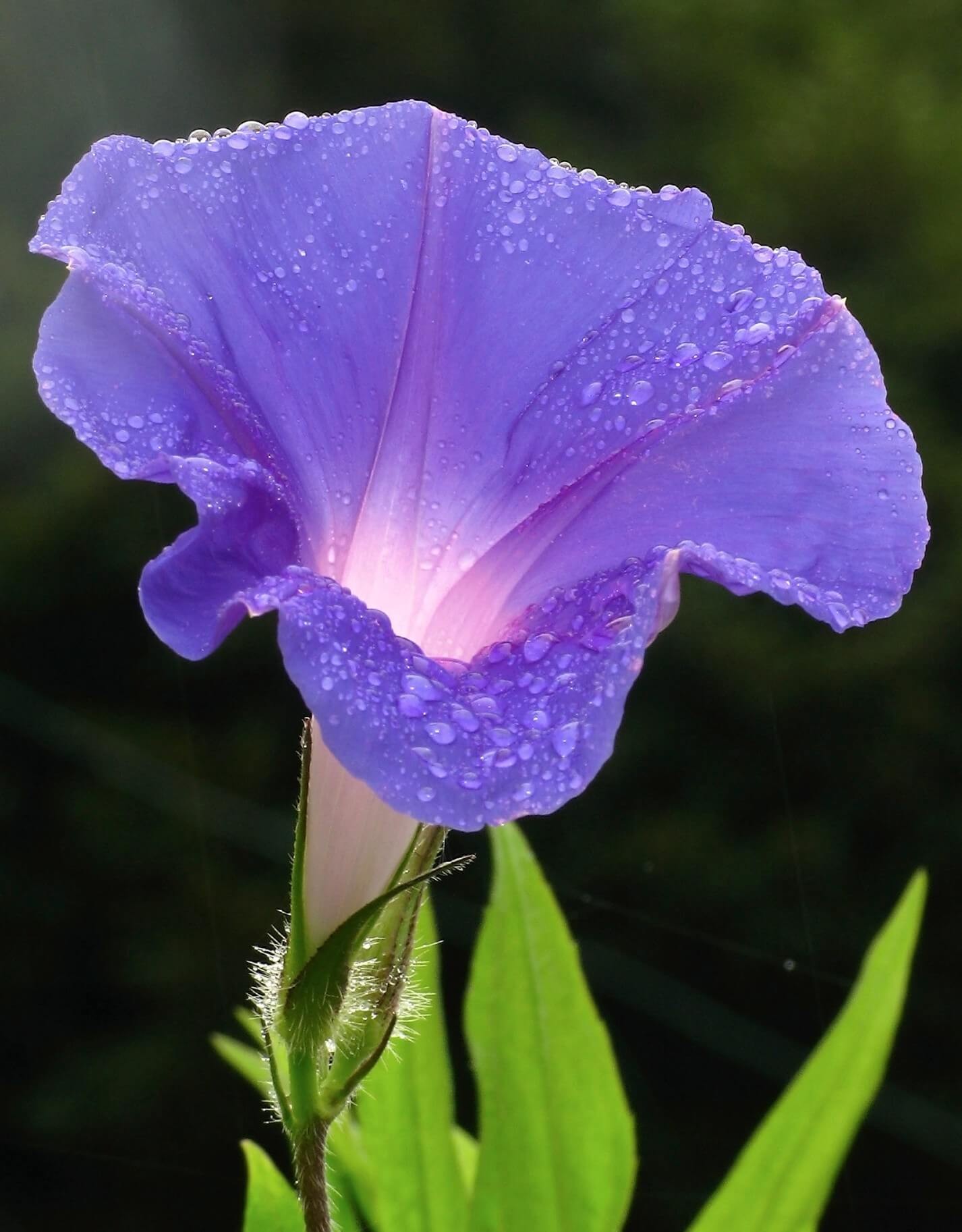
The morning glory flower boasts an array of varieties, with its cone-shaped blooms cascading elegantly along fences and trellises. While it’s a beloved addition to many gardens, morning glories also thrive in culinary and herb fields. In the realm of flower language, this symbol is often associated with delicateness and affection, adding a touch of sentimentality to its already captivating appearance.
#23. Passion flower
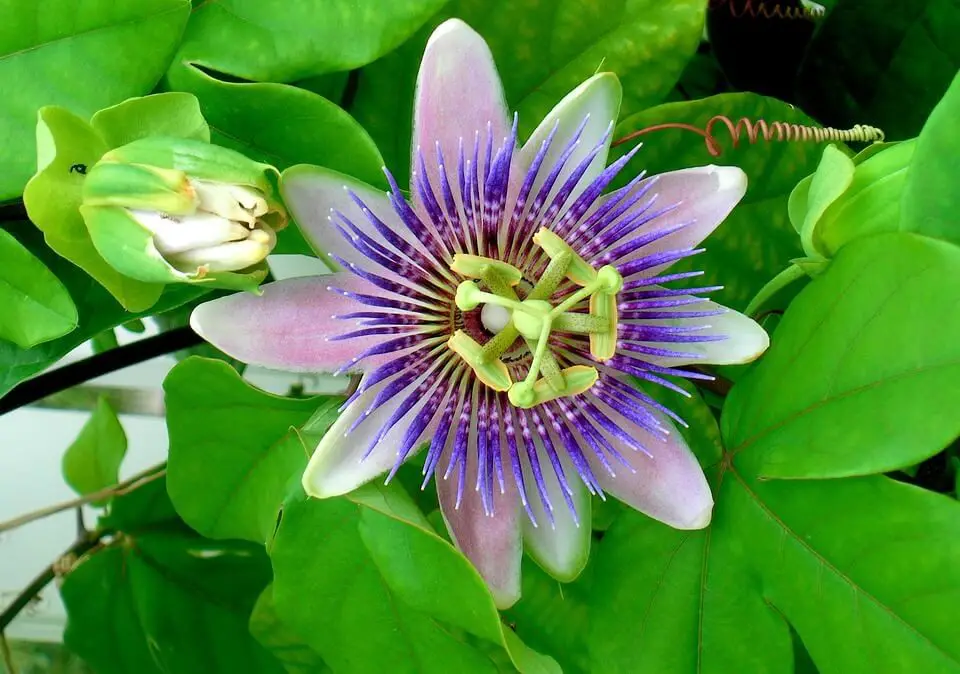
The apricot vine, also known as corona de cristo, boasts an extraordinary flower appearance that sets it apart from others. Its unique structure comprises base petals, hairy pin-like sub-petals, and outstretched cross-shaped small petals, creating a striking visual display.
This distinctive flower has significant symbolic meaning in Judeo-Christian religions, often representing the passion of Christ.
As such, it is seen as a symbol of salvation and rebirth, making it a revered and meaningful element within these religious contexts.
Herbs with purple flowers
Beyond their culinary significance, these plants are also notable for their calming effects on the mind and body. But that’s not all – they possess additional medicinal properties that make them even more remarkable. Did you know that their striking purple flowers are just one of many fascinating aspects of these plants?
#24. Lavender
Lavender is a widely recognized and highly valued purple flower that boasts not only stunning blooms but also a multitude of practical uses. Its distinctive, calming aroma is harnessed in the production of beauty products, soaps, and lotions, while its dried form is used to create soothing teas or add depth to potpourri blends. Additionally, the oil extracted from lavender is prized for its therapeutic properties.
Furthermore, this charming flower carries symbolic significance, representing devotion in many cultures.
#25. Chives
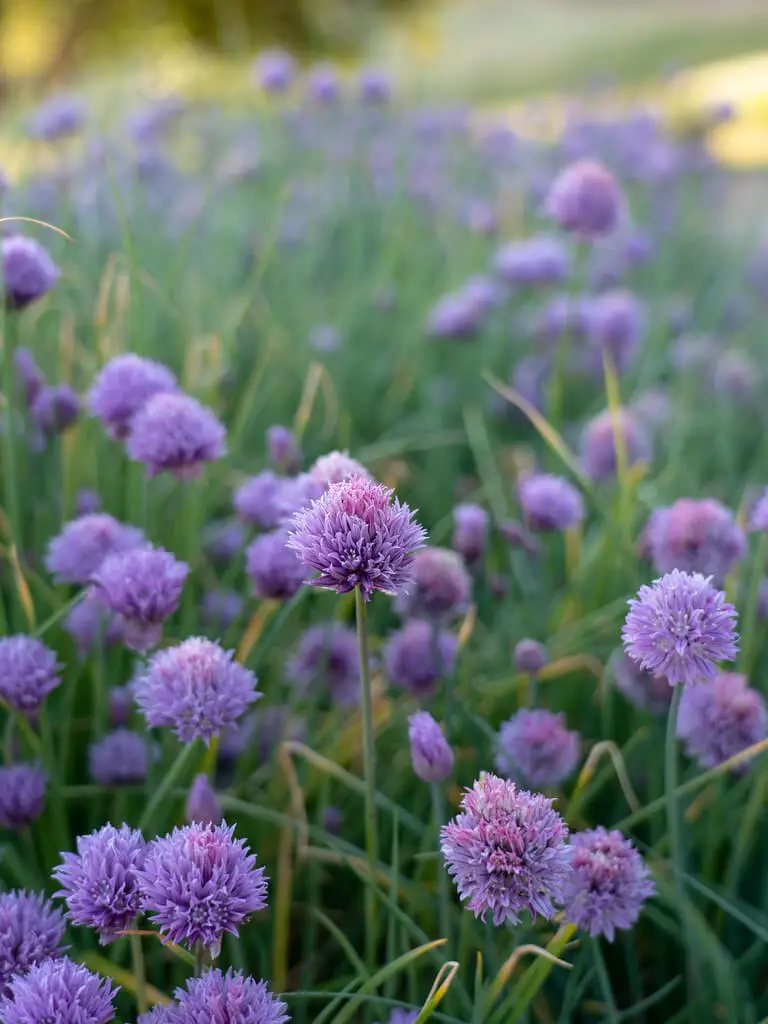
Chives are renowned for their remarkable productivity. They effortlessly propagate and germinate, making them an ideal choice for gardeners. One might assume that once chives have bloomed beautiful purple flowers, their harvesting days are over. However, this assumption is misplaced. You can still reap the benefits of these versatile herbs even after they’ve produced stunning blooms. In fact, you can harvest both the herb and the flowers to add a touch of elegance to your home decor.
Moreover, in China, chives carry a deeper significance, symbolizing productivity and usefulness. This cultural connotation further underscores the value of cultivating these remarkable plants.
#26. Catmint

Catnip, known to many as Leonurus cardiaca, is an herb that packs a punch. Its clusters of purple-blue, spiky flowers make it a striking border addition and a popular choice among bees, butterflies, and hummingbirds. This versatile plant has more than one trick up its sleeve, serving not only as a natural insect repellent but also as a substitute for lavender when the latter is scarce.
Beyond its practical uses, catmint holds a special place in flower symbolism, representing beauty, elegance, and joy.
#27. Thyme
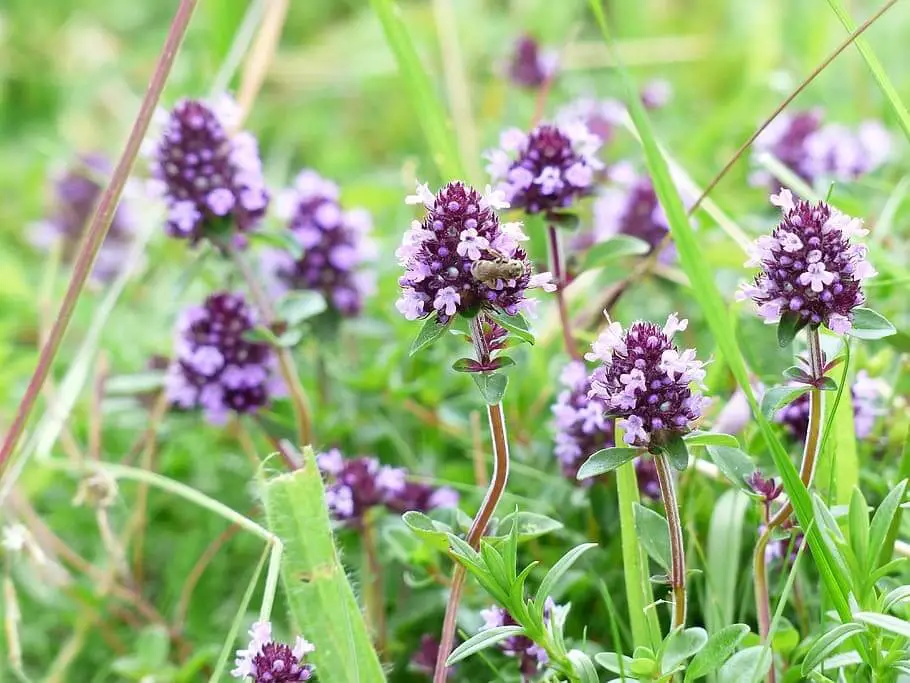
Thyme, a member of the mint family, is an evergreen herb that is cherished for its potent aroma and its ability to elevate the flavors of steak and chicken dishes. One of its most distinctive features is the production of small, lavender-like purple flowers. However, it’s essential to note that harvesting thyme after it has bloomed can result in a diminished aroma and flavor. This highlights the importance of timing when collecting this fragrant herb.
#28. Spearmint
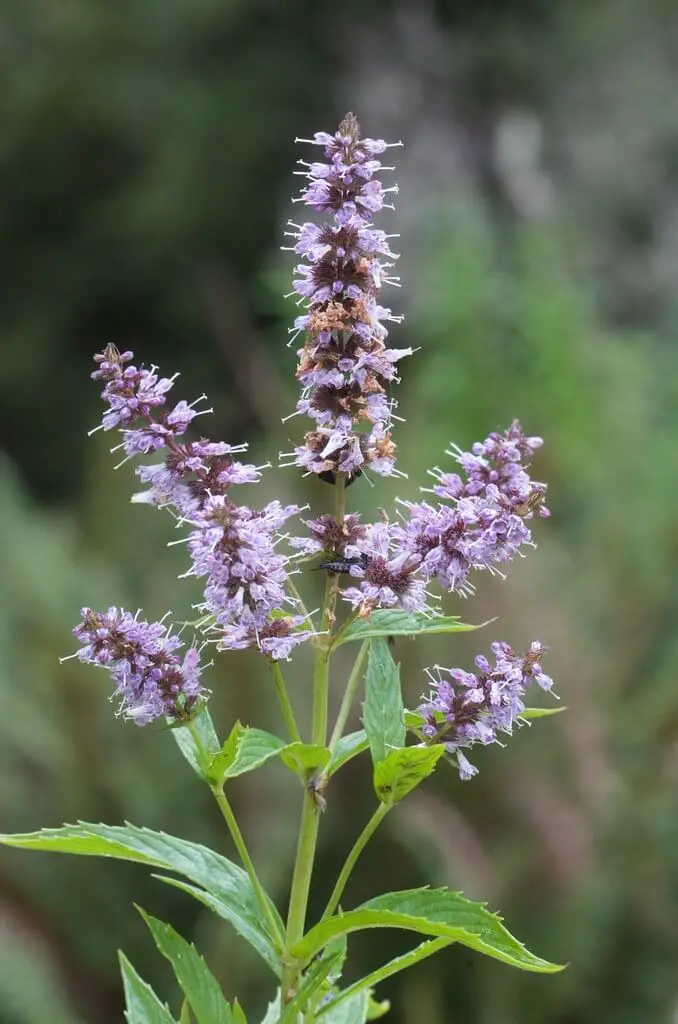
Also known as garden mint or common mint, this herb is renowned for its ease of growth – although it can quickly become invasive if neglected. Its medicinal properties are equally impressive, with uses ranging from treating digestive disorders to evening out hormonal imbalances, regulating blood sugar levels and alleviating stress.
One of the most striking aspects of peppermint is its ability to produce vibrant purple flowers in the spring, a sight that’s sure to delight even the most seasoned gardening enthusiasts. What’s more, unlike some other herbs like thyme and chives, peppermint’s potency doesn’t diminish with age – a testament to its enduring value as both a culinary and medicinal staple.
#29. Russian Sage

The striking feature of this plant is its slender stalks, which produce tiny lavender flowers that cluster all the way to the base. This unique arrangement makes it a magnet for bees and butterflies, who are drawn to the subtle fragrance emitted by the blooms. Beyond its aesthetic appeal, this plant has also been used in traditional medicine to treat a range of ailments, including upset stomachs, colds, coughs, and flu.
Its medicinal properties have made it a valuable resource for those seeking natural remedies.
#30. Rosemary

This perennial herb is multifaceted in its uses, extending beyond the realm of culinary delights. Its distinctive fragrance makes it an ideal component in the creation of body oils and washes. The plant’s unique characteristic lies in its slender, needle-like leaves and dainty flowers that come in shades of purple, pink, and white. Beyond its aesthetic appeal, lemongrass holds a rich symbolic significance, encompassing themes of passion, love, nostalgia, as well as mourning.
Its multifaceted nature has led to its adoption in various aspects of life, making it a staple in many cultures.
#31. Oregano
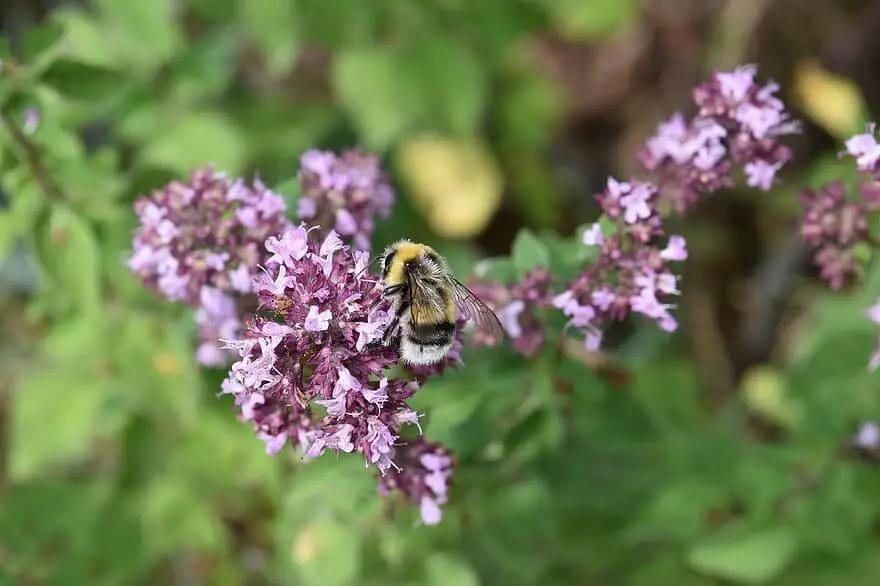
Within the mint family, this herb has been a staple for over a thousand years. Its uses extend far beyond culinary applications – it’s also been employed to combat infections and protect cells from damage due to its impressive antioxidant properties. Botanically, it boasts spade-shaped leaves and tiny clusters of deep purple flowers.
Purple perennial flowers
Imagine being surrounded by vibrant purple blooms that refuse to fade away. It’s a vision of serenity and beauty, don’t you think? If you’re on the hunt for such a treasure, look no further than this curated list, your starting point for discovering the perfect long-blooming purple flowers.
#32. Corydalis
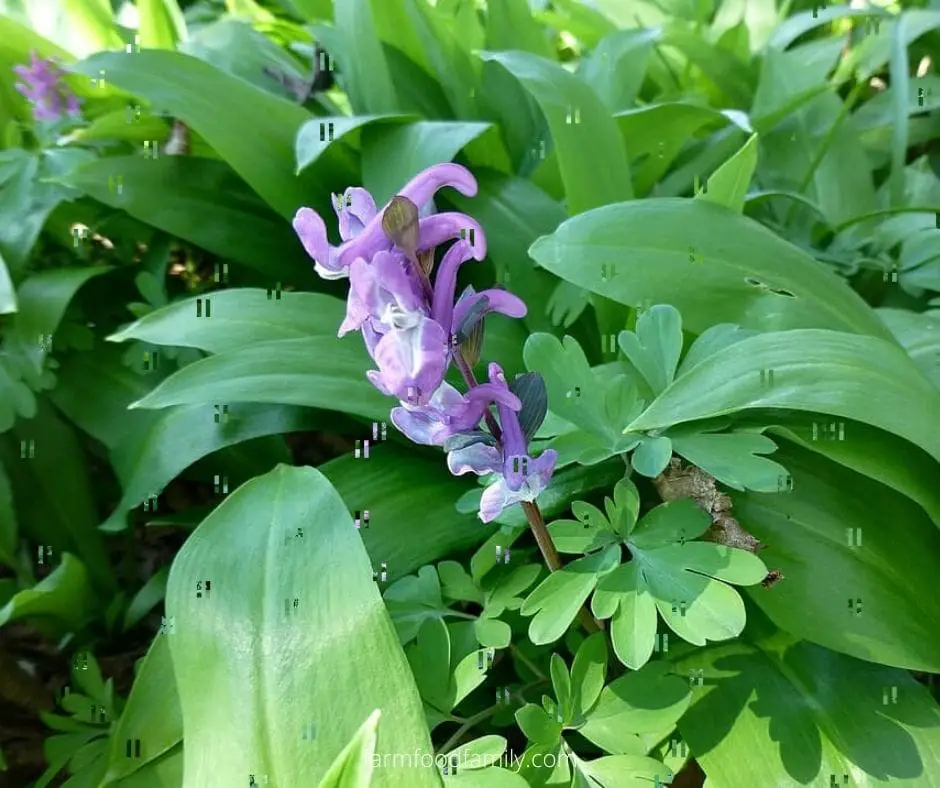
Poppies are a type of flowering plant that is renowned for its vibrant blooms in shades of pink, blue, and purple. The delicate petals create a stunning cascading effect, making them a popular choice among garden enthusiasts. Beyond their aesthetic appeal, poppies have also been used in traditional medicine to alleviate symptoms of mild depression, nerve disorders, and anxiety.
In some cultures, the poppy is also considered a symbol of faith, representing hope and resilience in the face of adversity.
#33. Phlox (Phlox paniculata)
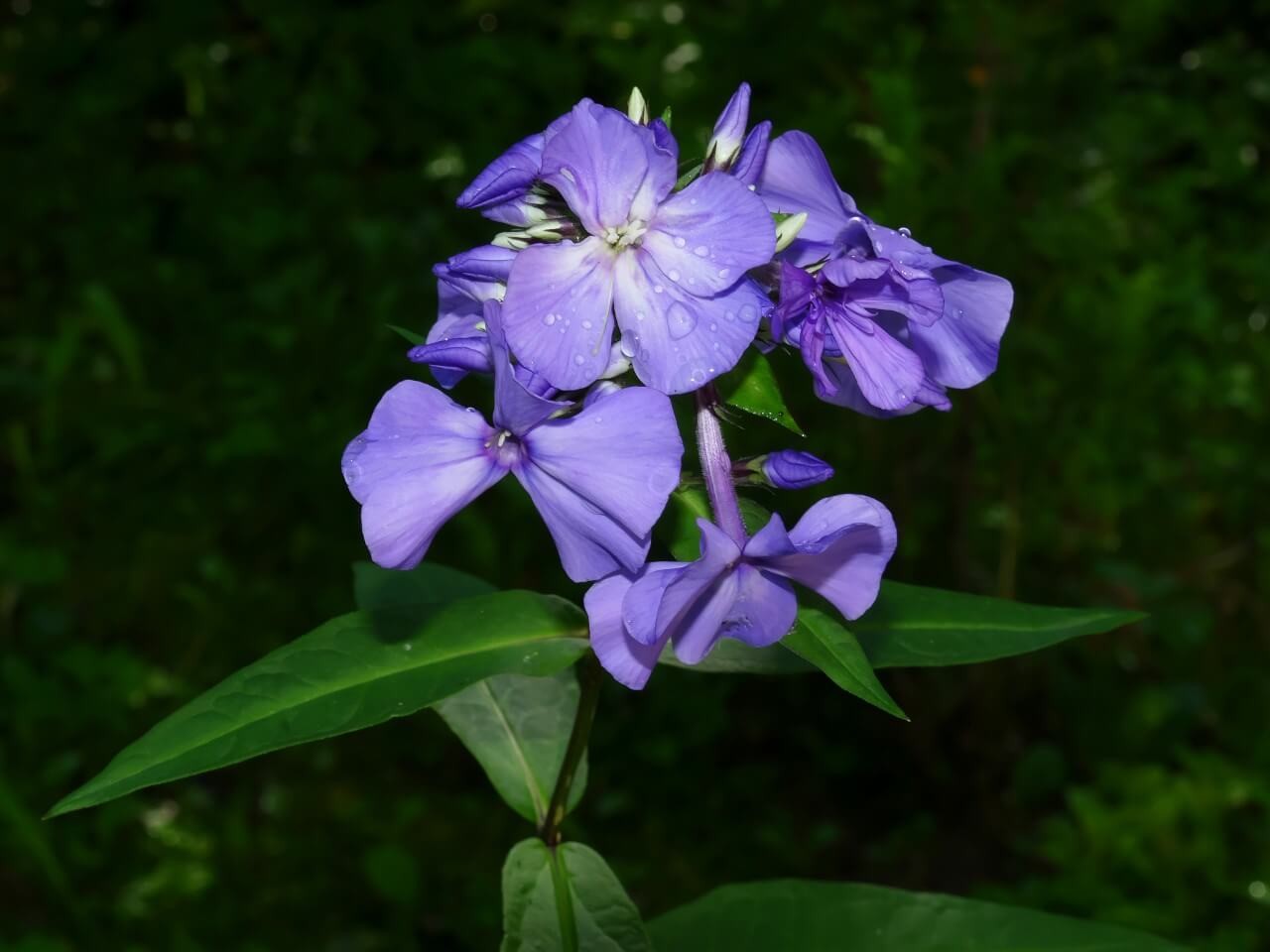
The lovely Cosmos flower is a standout feature of many summer gardens, boasting vibrant blooms in shades of pink, white, and purple. Not only does it thrive as a lush ground cover during spring, but it also transforms into a statuesque ornamental during the warmer months when it reaches its full height. Furthermore, this charming bloom has symbolic significance, representing fervor and a relentless pursuit of one’s goals.
#34. Salvia (Salvia nemorosa)
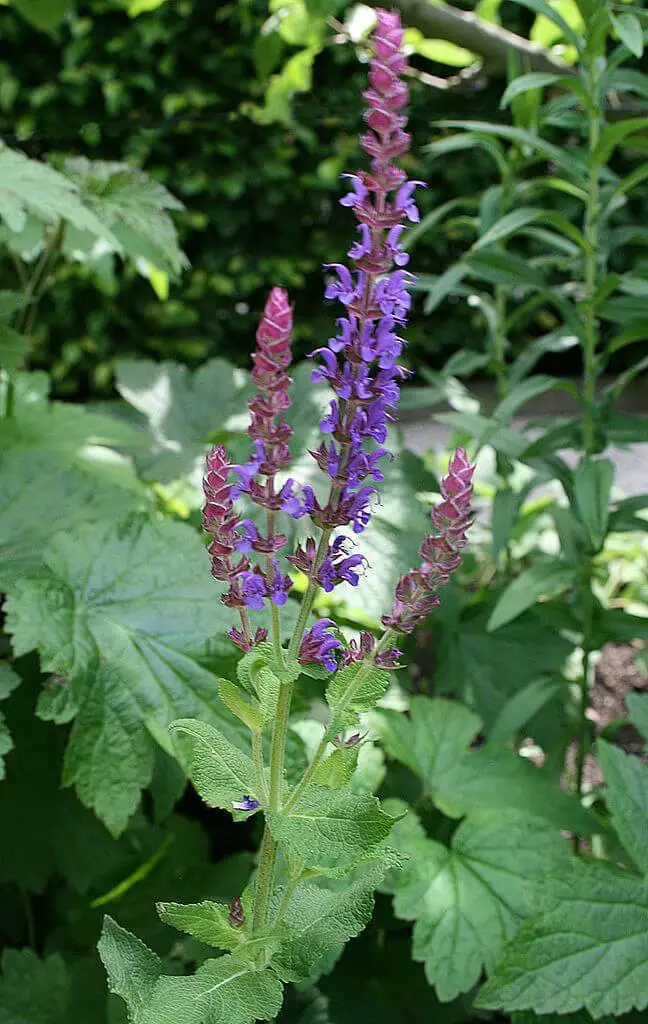
While often mistaken for lavender due to their similar slender stalks, the sage plant stands out for its distinct lack of scent. Also known as Salvia officinalis, this herb boasts psychoactive properties that have made it a staple in herbal medicine for centuries. Its therapeutic applications are diverse and far-reaching, with reported benefits including relief from insomnia, anxiety, and depression.
Additionally, it has been used to treat various skin ailments such as asthma, dandruff, halitosis, and eczema. As a symbol of healing, sage has become an integral part of many cultural traditions, its value extending beyond the physical realm.
#35. Wild petunia (Ruellia humilis)
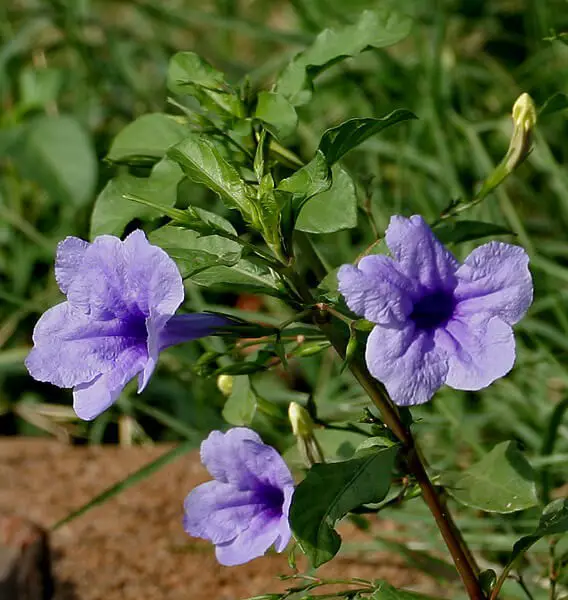
Native to the United States, this plant thrives in diverse environments such as open woodlands, prairies, and the unique ecosystem of the everglades. What’s more remarkable is its ability to flourish in extreme temperatures, producing blooms during the hottest summers when other flowers are already struggling to survive.
#36. Lungwort (Pulmonaria species)
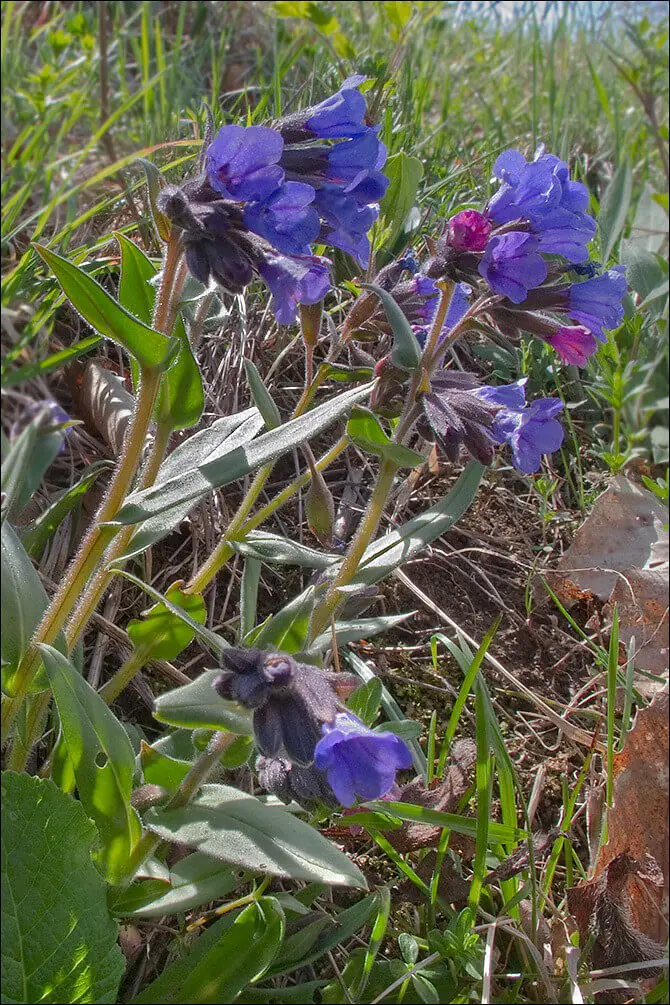
The Lungwort plant gets its unique name from the mottled appearance of its leaves, which are said to bear a striking resemblance to human lungs. This fascinating flora is particularly beloved by bees, specifically those with hairy feet, known as flower bees. As the name suggests, the Lungwort produces funnel-shaped blooms in an array of vibrant colors including purple, pink, blue, white, and red.
But what’s truly remarkable about this plant is its dual purpose – not only is it cultivated for its ornamental value, but also for its medicinal properties. The Lungwort has been used to treat respiratory and digestive ailments, making it a valuable ingredient in pharmaceutical applications.
Purple and white flowers
When it comes to striking color combinations, few can rival the timeless elegance of purple and white hues. Among the most stunning examples of this harmonious pairing are three particularly noteworthy flowers that stand out for their beauty.
#37. Bellflower
Campanula, also known by its alias, boasts an impressive duality of uses – serving as both a lush ground cover and an elegant garden divider or border. A subtle irony lies within its moniker ‘bellflower’, for the plant’s actual blooms take on a star-shaped form, showcasing an array of purple tones. As a symbol, campanula represents unwavering love and affection that endures eternally.
#38. Columbine

The Delphinium’s unique appeal lies not only in its striking bell-shaped blooms featuring a palette of blue, purple, and white hues, but also in its reputation as a magnet for pollinators like bees and hummingbirds. Moreover, this charming flower carries symbolic significance, representing both the innocence and playfulness of youth.
#39. Petunia
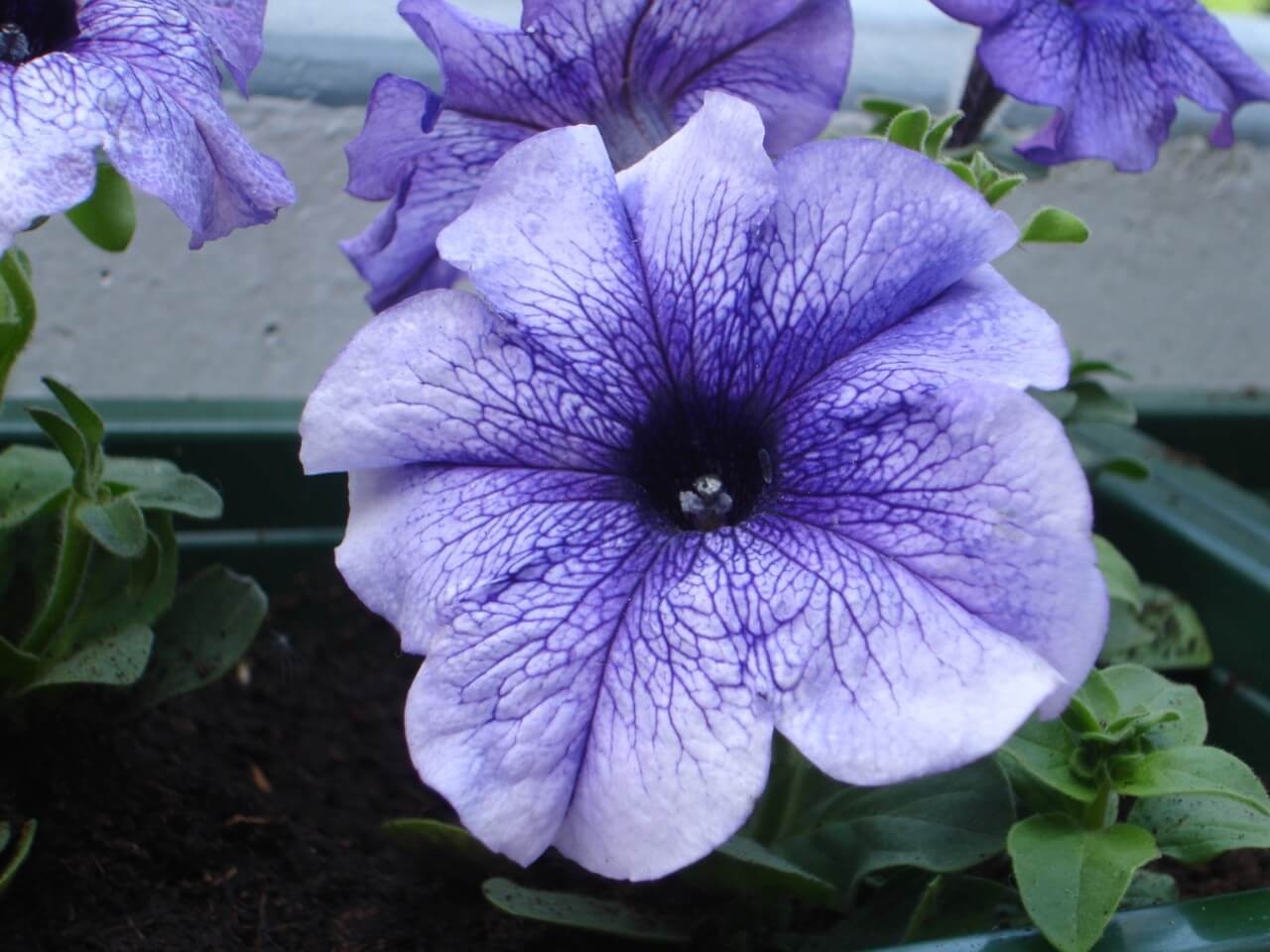
This majestic bloom boasts an impressive palette of colors, including vibrant reds, warm oranges, pure whites, sunny yellows, soft pinks, and rich purples. Its versatility extends to both practical and aesthetic uses – it thrives as a ground cover, growing in compact clumps that can be effortlessly maintained. When cultivated for ornamental purposes, its beauty is undeniable.
Furthermore, the symbolic significance of this flower lies in its nuanced balance between representing whimsical enchantment and fantastical ideals on one hand, while also conveying resentment and anger on the other.
Purple annual flowers
As the journey from seed to bloom unfolds, along with the ongoing task of year-round upkeep, the allure of purple annuals lies in their ability to provide an unparalleled sense of accomplishment and aesthetic appeal that permeates every moment spent in one’s garden.
#40. Cornflower
The Cornfield Flower, also known as the ‘corn cockle’, got its name from its ability to thrive in corn fields during medieval times. Its unique appearance features hairy, pin-like petals with a striking silver-grey sub-petal and sturdy stems that give it a rustic charm. This flower serves as a powerful symbol of life’s fullness and the beauty that can be found in simplicity.
#41. Pelargonium Funchal
Native to South America, this plant’s resemblance to geraniums stems from its ivy-shaped flowers. The similarity is so striking that it can be easily mistaken for a member of the geranium family. Its floral display is characterized by vibrant purple hues with streaks of white, which remain in bloom from spring through summer.
#42. Clary Sage
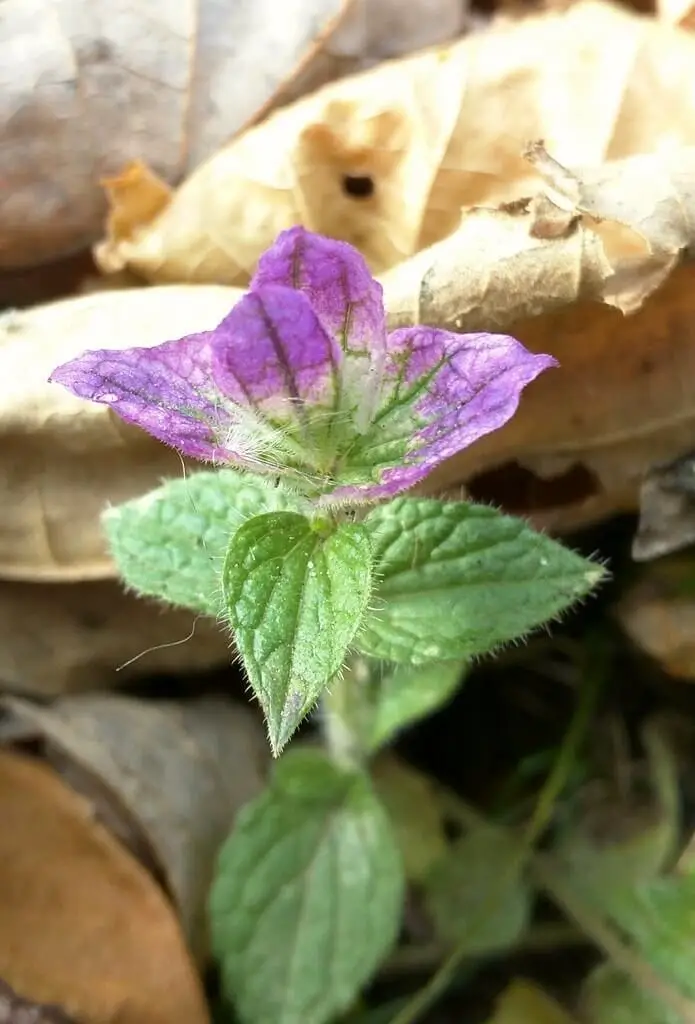
Aromatic and visually striking, this flowering herb originates from the sun-kissed Mediterranean region. Beyond its established use in traditional medicine to alleviate skin afflictions and promote relaxation, it has also gained popularity as a decorative addition to gardens and arrangements due to its delicate, clustered blooms that sprout from slender stems.
#43. Purple Geranium
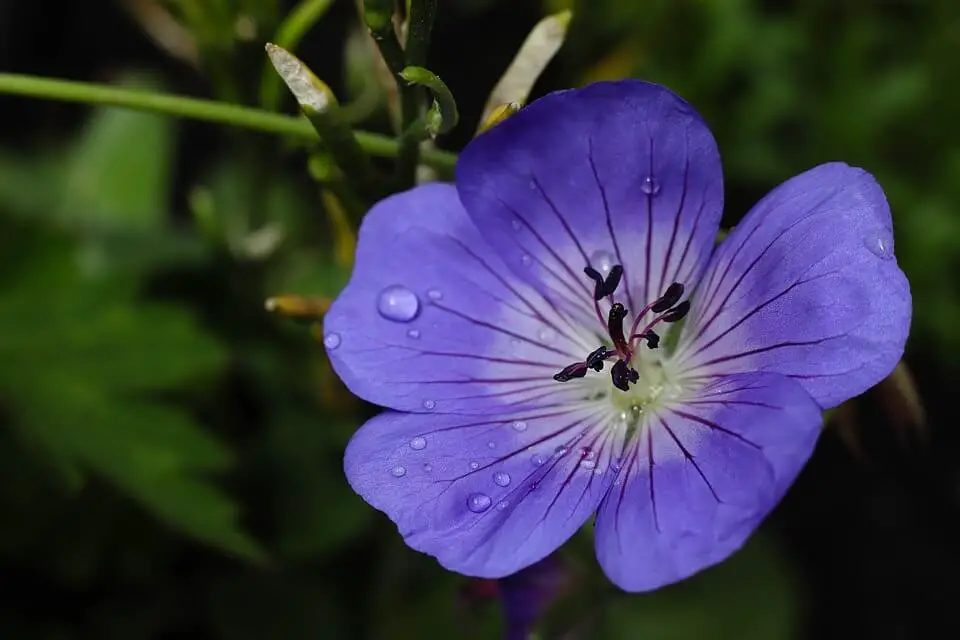
Cranesbill geraniums, also known as Geranium maculatum, are a long-standing favorite among gardeners, often paired with vibrant blooms like dahlias and marigolds. Beyond their stunning displays of color – particularly the iconic purple hue – these versatile plants have another impressive trick up their sleeve: they repel snakes, mosquitoes, and other unwanted insects.
In the realm of flower symbolism, cranesbill geraniums are steeped in significance, representing femininity, fertility, and protection, making them a popular choice for gardeners seeking to add an extra layer of meaning to their outdoor spaces.
Poisonous purple flowers
Beautiful as they may seem, the risks associated with having them in your garden cannot be overstated. Not only do they pose a threat to human life, but also to that of animals. It’s crucial to possess a deep understanding of their toxic properties and develop the skills necessary to safely coexist with these plants.
#44. Aconitum napellus (monkshood)
Monkshood, also known as Wolfsbane, is a popular choice in gardens due to its perceived toxicity. The name Monkshood originates from the plant’s uncanny resemblance to a monk’s cowl. In contrast to ornamental varieties, wild Monkshood exhibits deeper purple hues. This versatile perennial can be used as a border or ground cover. However, it’s essential to note that every part of the plant is toxic and can attract unwanted pests.
#45. Wolfsbane
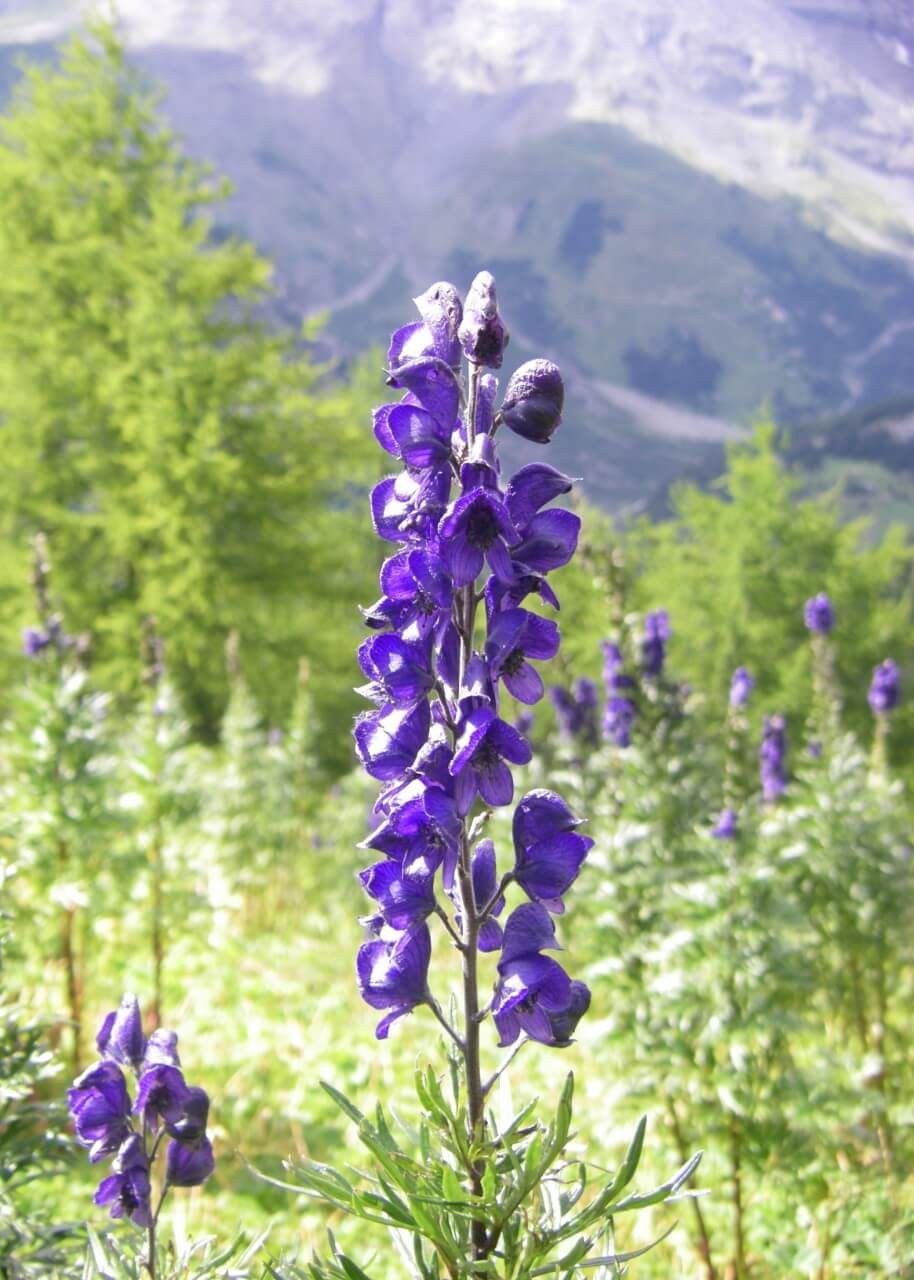
A subtle yet significant nuance exists within the botanical realm as two distinct names refer to a singular entity. Monkshood and its synonym, Aconitum, share a symbiotic relationship, with each term describing the very same plant. This harmonious coexistence highlights the intricacies of language and classification in the world of botany.
#46. Deadly nightshade
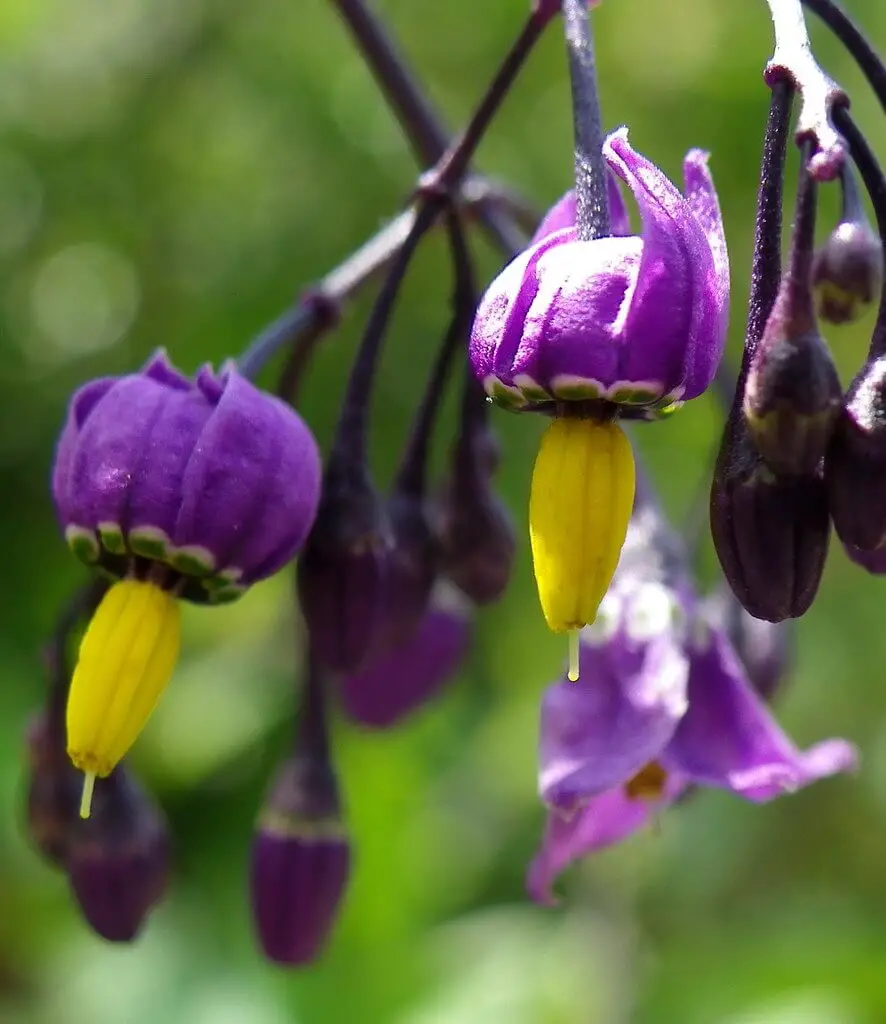
At its core, this plant is also known as belladonna or devil’s cherries due to its striking appearance. Its flowers take on a distinctive bell shape before giving way to inky black fruits that resemble cherries. While the taste may be sweet, it’s crucial to remember that these fruits are toxic to both humans and animals. As such, this plant has become a potent symbol of vendetta, betrayal, deception, and ultimately, death.
Conclusion
In conclusion, the realm of purple flowers is characterized by a rich diversity, encompassing various types and species that showcase distinct features – both captivating and nuanced. While some varieties are undoubtedly more desirable than others for gardening purposes, it’s undeniable that each type possesses its unique allure. This post aims to provide an introduction to the world of purple flowers, highlighting their intriguing aspects and justifying the focus on this particular topic.
Related Posts
When it comes to flower delivery, there’s an age-old question that often lingers in the minds of customers and florists alike: do you tip your floral courier? The answer lies in understanding the value and effort that goes into bringing a bouquet or arrangement to your doorstep. Just like any other service industry, tipping for flower delivery is not only appreciated but also expected.
A 15% to 20% gratuity is considered standard, although it ultimately depends on the quality of service you receive.






